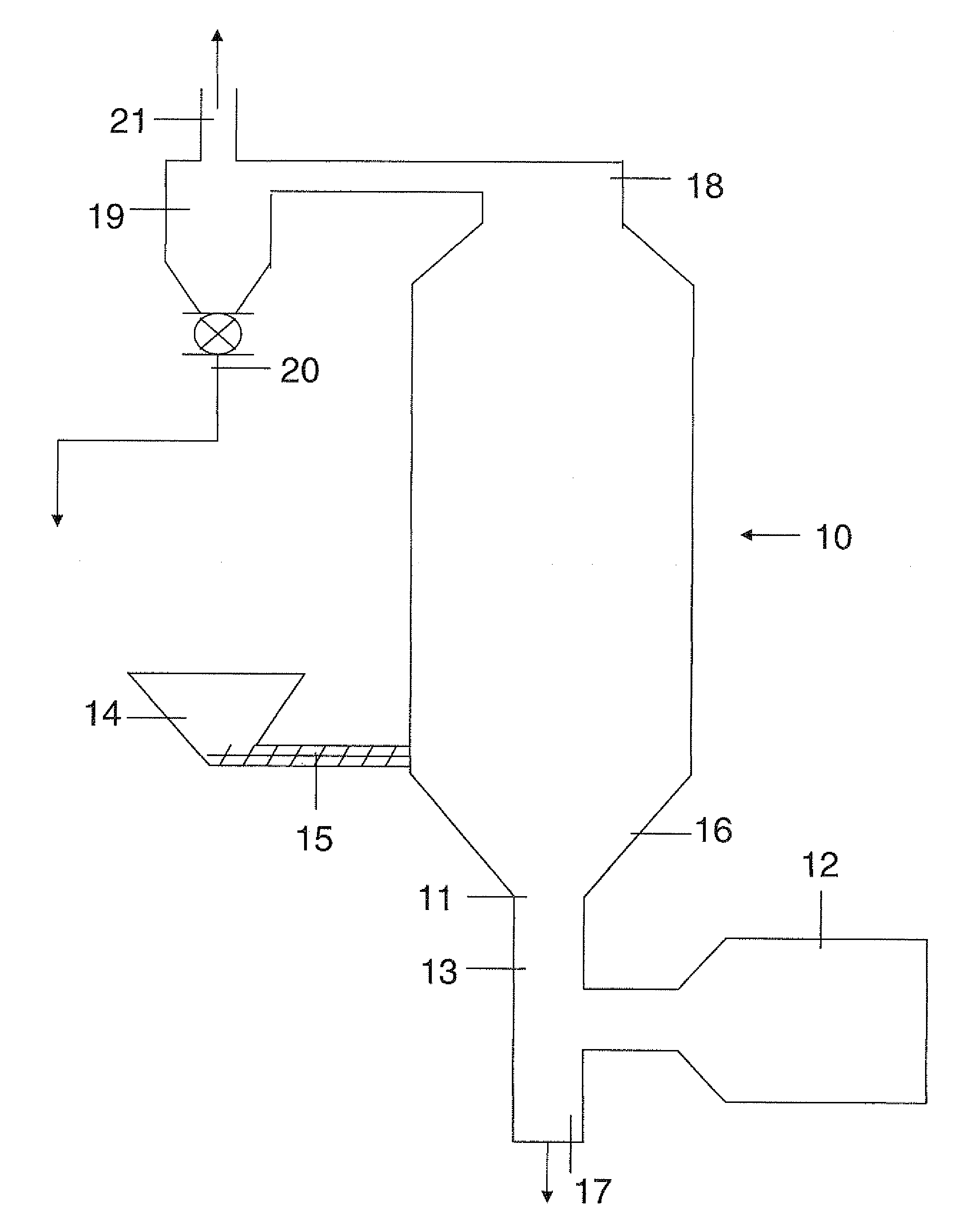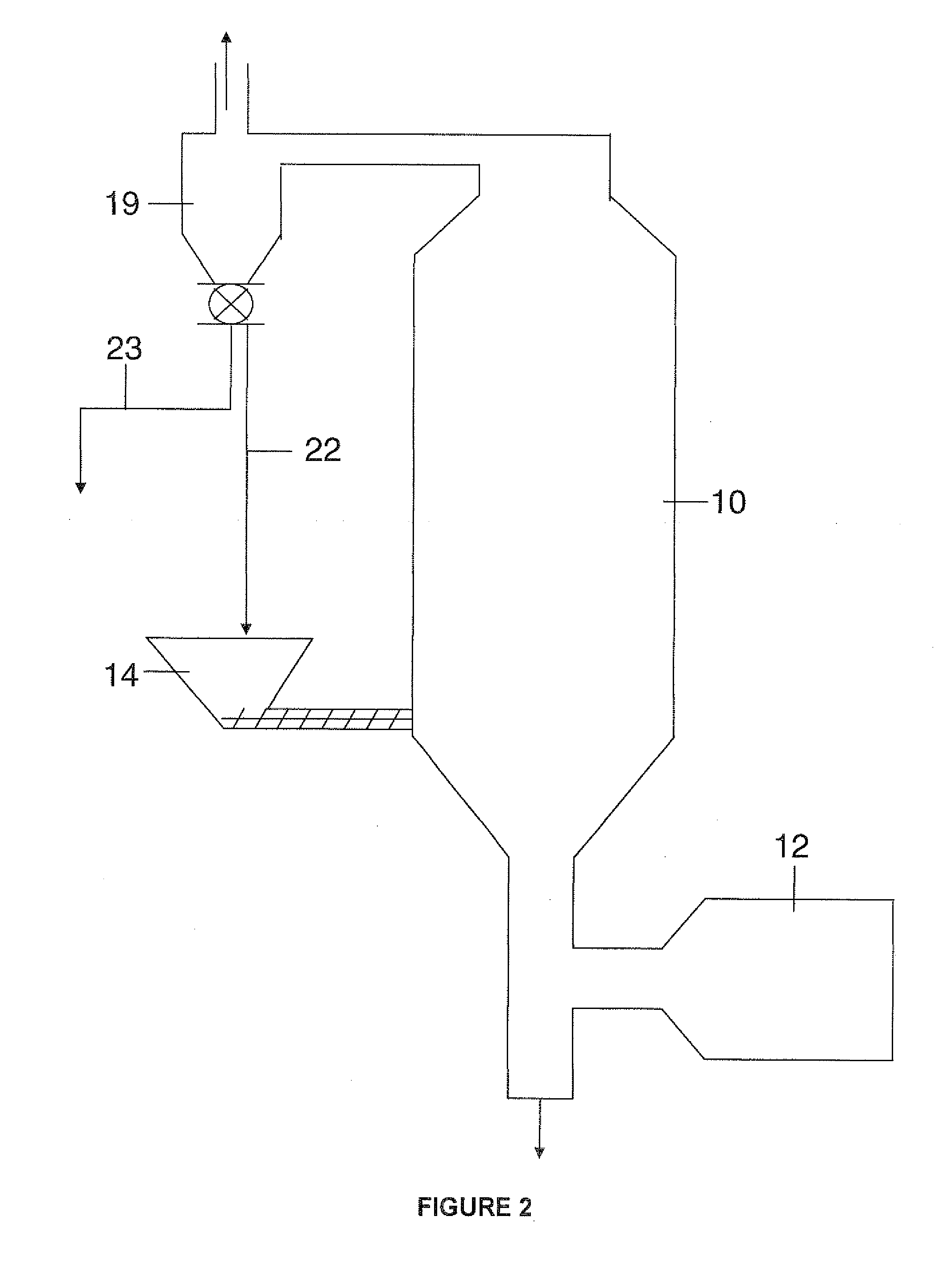Method for Drying Potash
a potash and drying method technology, applied in the field of drying potash, can solve the problems of high off gas temperature, frequent maintenance of rotating components, rotary dryers, etc., and achieve the effects of reducing plant footprint, reducing maintenance, and reducing dryer fuel consumption
- Summary
- Abstract
- Description
- Claims
- Application Information
AI Technical Summary
Benefits of technology
Problems solved by technology
Method used
Image
Examples
Embodiment Construction
[0022]It should be understood at the outset that identical reference numbers on the various drawing sheets refer to identical elements of the invention. It should also be understood that the following description is intended to completely describe the invention and to explain the best mode of practicing the invention known to the inventors but is not intended to be limiting in interpretation of the scope of the claims. The drawings are not necessarily to scale, emphasis instead being placed upon illustrating principles of the invention.
[0023]Any conventional process can prepare the potash used in the practice of this invention, most preferably a flotation process, and the potash feed typically contain between about 3 and 6 percent by weight moisture. The feed may also contain amounts of undesirable organic residue.
[0024]With reference to FIG. 1, there is a vertical gas suspension drying column 10, the air inlet end 11 of which is connected to a source of hot gases such as burner 12 ...
PUM
| Property | Measurement | Unit |
|---|---|---|
| temperature | aaaaa | aaaaa |
| residence time | aaaaa | aaaaa |
| inlet temperature | aaaaa | aaaaa |
Abstract
Description
Claims
Application Information
 Login to View More
Login to View More - R&D
- Intellectual Property
- Life Sciences
- Materials
- Tech Scout
- Unparalleled Data Quality
- Higher Quality Content
- 60% Fewer Hallucinations
Browse by: Latest US Patents, China's latest patents, Technical Efficacy Thesaurus, Application Domain, Technology Topic, Popular Technical Reports.
© 2025 PatSnap. All rights reserved.Legal|Privacy policy|Modern Slavery Act Transparency Statement|Sitemap|About US| Contact US: help@patsnap.com



